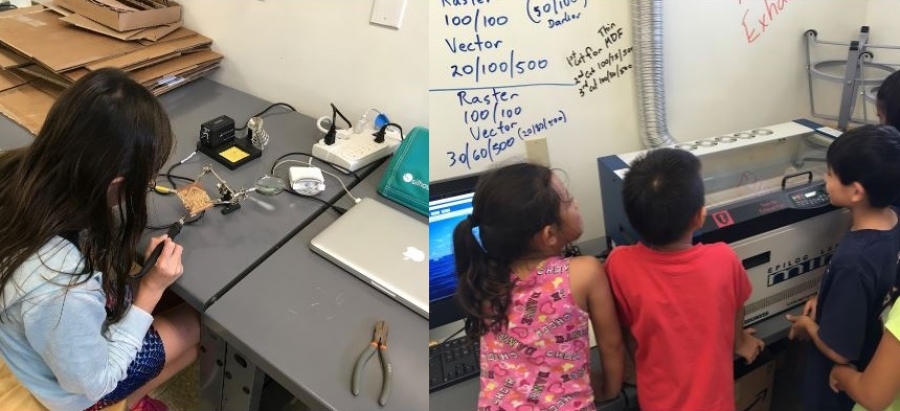It seems like the majority of the school makerspaces are run as a "special" class… like art or music. Depending on the grade, students come to the space and work on a given challenge from the teacher in charge. A lot of these schools also run "club" programs for smaller groups of students to come to the space during or after school to work on individual or small group projects.
The responsibility for running, planning and administering these spaces has been placed on a teacher, librarian or administrator. Other schools have hired people specifically for the job as a "makerspace" teacher.
There is, of course, nothing wrong with any of these approaches. Whatever way making works for a school, where children's learning is enhanced, we should wholeheartedly support it.
The Lower School Lab at 'Iolani School is run differently than any other school makerspace that I am familiar with. There is a bit of a backstory to how we got to where we are, and if that interests you, contact me or look back at our blog posts (http://iolanik-6fablab.blogspot.com). For now, I want to explain how we have been running things the past few years.
Everything we do starts out based in our philosophy and belief that we learn best by doing.
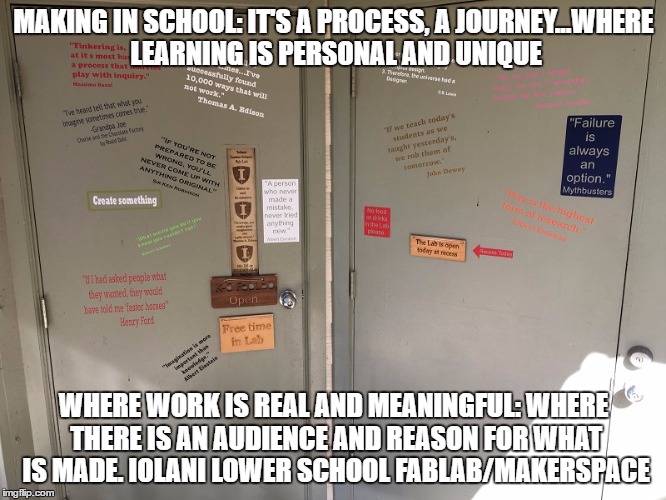
The school year begins with a schedule that was totally clear. No pre-scheduled classes, no required courses to teach. After our first year (2014/15), everyone got a glimpse of what could be done in the Lab… now, teachers and students are ready to incorporate more making into the curriculum.
Teacher come up with units that are project based and use design thinking or the design process. Part of my job is to sit down with them and discuss how best to use the Lab's technology and come up with a time line. We then schedule sessions and the making starts.
For our kindergarten and first graders, we found units from the Science Museum Boston's program, Engineering is Elementary (a hands-on science / engineering set of 20 different units across a variety of topics) that aligned with the curriculum. Teachers would sign their class up for six sessions of about 45 minutes each and we would go through a unit. Kindergarten built bridges and first grade learned about light and sound.
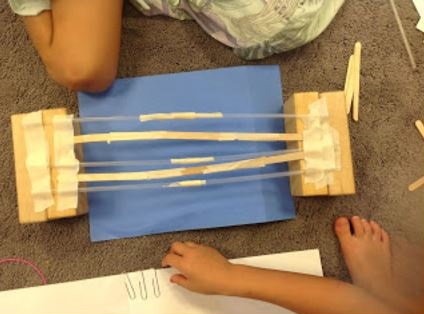
Those are the only ‘external’ curriculum we use. Everything else comes directly from the teachers/students, Here are some examples of projects we’ve done over the years:
Kindergarten garden stakes (laser cutter): Students design stakes for their garden on paper. They are then scanned into the computer and laser cut. Although the children do not do the technical aspect of this project, we show them how we use the software and let them watch the laser cutter in action.
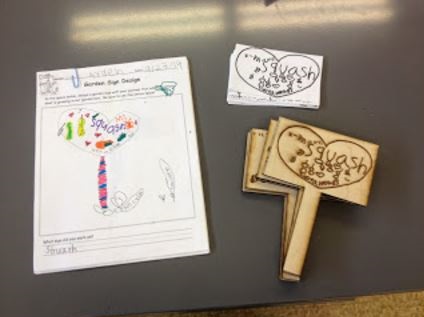
First grade fictional rainforest creatures (recycled material): As part of the rainforest unit, these students worked in groups to create a fictional creature that lives in one of the layers of the rainforest. Using design thinking they imagine, plan, create and improve this creature. The teachers also enlisted the help of our high school biology class. The first graders shared their ideas for the creature and the HS kids gave them feedback about how "real" their animal was. The students then came to the Lab to create their creature using recycled material. We first gave them a lesson on connecting materials (tabs, flanges, slots, etc.) and then the followed their plan and made their animal.
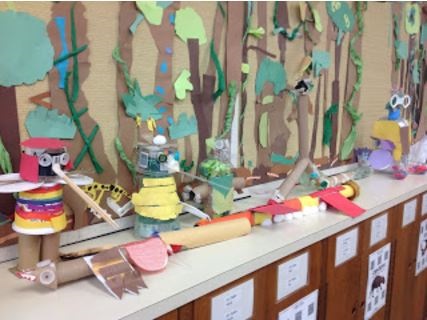
Second grade statue pedestals (cardboard): After a few lessons on building structures and how different forces affect the structures, these students designed and created a pedestal to hold a statue they made. Using cardboard, these kids came up with some amazing designs.
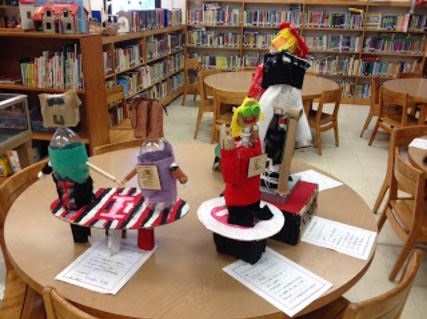
Third grade desk caddies (laser cutter): As part of a design thinking activity, our third graders had to solve the problem of not having a place to put their supplies (pencils, markers, erasers, etc.). They solved the problem by designing and building desk caddies. They made drawings and then prototypes cut out of cardboard. Next they wrote out their plan and included a labeled diagram of their caddie. They transferred the design to the computer and then to the laser cutter the pieces. Finally they glued them together and put them on their desks.
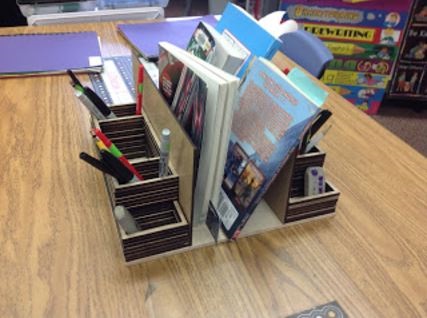
Fourth grade volcano poems (Scratch): After writing poems about volcanoes, the fourth grade went on the computer and after an intro lesson to Scratch, they began programming. After three sessions on the computers, students brought their words to life on the screen.
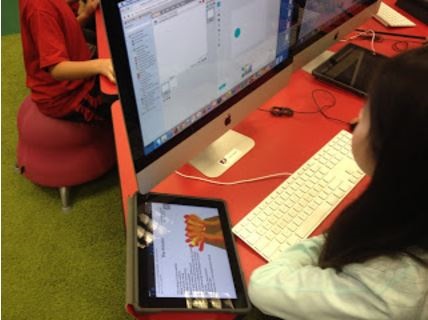
Fifth grade game board pieces (laser cutter and 3D printer): After reading a novel, students were challenged to make a game board that would show what they learned about the book. They were given the option of using the Lab and some kids did. We had game piece made on both the 3D printer and the laser cutter. Students made signs on the laser cutter too.
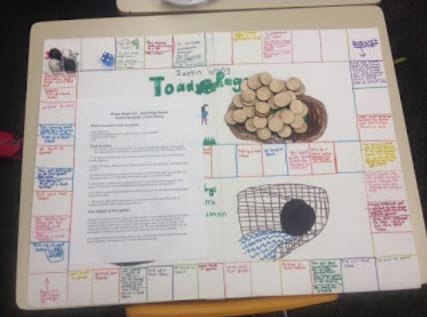
Sixth grade Ancient Egyptian artifacts (laser cutter & 3D printer): During the sixth grade year, students learn about ancient cultures. One of these units was on ancient Egypt. Students were challenged to create an artifact and give a report on it. Given the option of using the Lab, a number of students came in and made a variety of things.
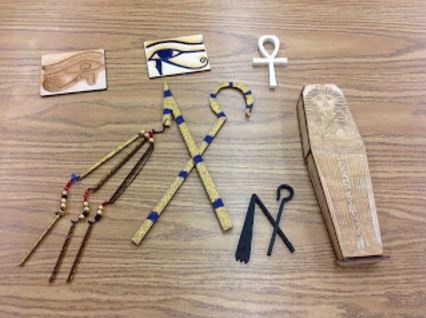
One additional program we offered was "mini-sessions" for grades 2-6. The students needed to have basic knowledge of what could be done in the Lab and how to use the technology. We developed a 90-minute session, specific to each grade level. The topic was based on their curriculum and what we thought their needs for the Lab might be. We came up with the following plan… 2nd grade would learn Scratch Jr; 3rd would be exposed to Scratch and MakeyMakeys; 4th would learn how to use the laser cutter; 5th would be introduced to 3D printing; and 6th would get basic circuitry.
Teachers were asked to find a 90-minute slot, any day at anytime and I would teach the lesson. The thought is that by the time a student goes through the Lower School, they will have a basic understanding of all these things so that in the Upper School's Sullivan Center (that's another great story) there will be almost no limit to what they can make.
This is how we do it here at 'Iolani's Lower School FabLab/Makerspace!
How do you do it at your school? Share your makerspace stories below!


